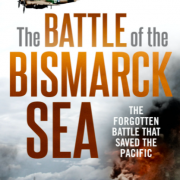When taking offence becomes offensive …
Above: David Rowe’s commentary in the Australian Financial Review
Have to laugh when a bunch of comic administrators can’t see the irony in B-rating a professional cross-dresser for his comments on cross-dressers.
Especially when that cross-dresser is responsible for that bunch’s existence. Talk about biting the hand that feeds. Like the cannibal who ate the comic said: tastes funny.
Definitely something funny going on with the snarky little snub of Barry Humphries by the Melbourne Comedy Festival.
Cartoonist Johannes Leak summed it up neatly with his image of the festival thought police sitting about at a crisis meeting moaning: “We’re a laughing stock.”
Doubt they would have laughed either at David Rowe’s cartoon of Bazza’s alter-egos lined up at the Pearly Gates being told by old Peter to form an orderly queue.
Dame’s Edna’s eyes are popping as Sir Les Patterson, equipped with signature cigarette, drink and blazing erection, jumps queue on Sandy Stone and squeezes in behind her.
“ ’Scuse me for pushing in Edna,” he apologies, his face a lascivious purple not unlike the backside of a rutting baboon. Edna’s set to jump, to use Les’ diction, like a kangaroo bitten on the balls by a redback spider.
Are you with me, Parkie?
Barry Humphries’ disdain for wowsers, the woke PC, the patently unhappy cancel culture, tub-thumping moralists, is having an extended field day right now. He’d be jumping for joy in his grave, if he was in there yet.
Dan Andrews is talking of a State funeral for the comedy giant. He should be thinking of a statue, too. Might want to start thinking about an inscription, as well. Maybe something from Barry Mackenzie:
“I was down by Bondi pier
“Drinkin’ tubes of ice-cold beer,
With a bucket full of prawns upon my knee
“When I swallowed the last prawn,
“I had a technicolor yawn
“And I chundered in the Old Pacific Sea.”
Probably a bit too Sydney-centric for a Melburnite, though. And glorifying grog, instead of gambling. Maybe something a bit more generic:
“One day I got to reading
“In an old sky-pilot’s book
“About two starkers bastards
“Who made the Lord go crook
“They reckoned it was a serpent
That made Eve the apple take
“Cripes that was no flaming serpent
“Twas Adam’s one-eyed trouser snake.”
Hmmm. Having a go at the Christians. That should get it a run but it’s probably still a bit too close to the humour that made Alvin Purple a hit in 1970s Australia. And Paul Hogan with his dopey drooling over a bikini-clad Delvene Delaney. Or Benny Hill with his cast of buxom, wink wink, co-stars.
Appalling stuff. To think that people used to roll up in droves to theatre restaurants such as Dirty Dicks. And to drive-in theatres with hard porn flicks on giant screens that could be seen for miles around. Hippies danced naked at rock festivals. Nudists made themselves comfortable on beaches.
Aaagh, excuse me, but the Kath and Kim character Sandy Freckle just suddenly came to mind. Shh, don’t laugh. The fun police will get you. Bit like that other farce, No Sex Please, We’re British. That was packing them into the West End way back when Barry Humphries was just hitting his straps.
Bawdy, risqué behaviour has been going on since Chaucer’s time. And the Romans. You should check out what the Greeks were up to. Maybe check a few cave paintings too if you want to get real funny about it all.
Sorry, it’s human nature to get down and dirty. Barry Humphries did all of that, with great skill and humour. He targeted the wowsers and what we’d now call the woke and PC brigades. The stuck-up, self-righteous and up-themselves do-gooders.
And there should be more of it.
As for the transfolk, well, according to Sir Les: “I yield to none in my abhorrence of sexual prejudice. As for some courageous folk who claim that they were born in the body of the wrong sex, Les Patterson has this to say: ‘I’ve been there, guys. I know. I need to get into the body of the opposite sex on a regular basis’.”
Les insists he defends “to the ultimate my right to give deep and profound offence … so long as people laugh while they’re being offended.”
When he was asked do they laugh as much nowadays?
“Oh yes, of course they do.”
Seems, it’s just not at the Melbourne Comedy Festival.

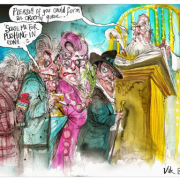

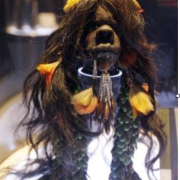
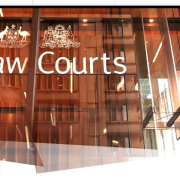


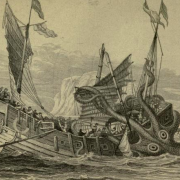


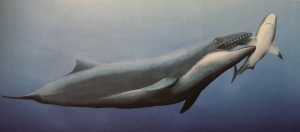 nasaura
nasaura